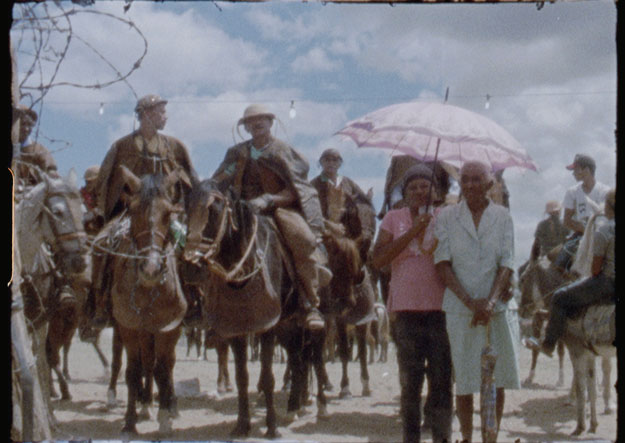News to Me: Miguel Gomes, Philippe Garrel, Justin Simien
Miguel Gomes’ Selvajaria

© Maureen Fazendeiro / O Som e a Fúria
Three years after his sprawling, wildly imaginative Arabian Nights premiered to wide acclaim at the Directors’ Fortnight at Cannes, Miguel Gomes is gearing up to direct another movie inspired by literature. The Portuguese filmmaker’s fifth feature, Selvajaria, will bring to the screen Euclides da Cunha’s Rebellion in the Backlands—a landmark 1902 Brazilian novel about the brutal war between government forces and messianic separatists in the 19th century.
“Da Cunha’s book has quite a mythical reputation,” Gomes told Film Comment via e-mail. “Like many others, I had heard about it but never read it.” In 2015, when he finally began to read the novel—on a flight to Brazil, no less—it took him just 50 pages to realize that he wanted to adapt it into a film.
“It was a bit insane because the book has more than 500 pages, and the first 50 are just about geography, climate, animals, and plants,” he said. “But they are great!”
The length and scope of the text make for a challenging adaptation, said Gomes, who developed the script with co-writers Maureen Fazendeiro, Telmo Churro, and Mariana Ricardo. “For almost two years we’ve written and rewritten this script, trying to adapt the whole damn thing,” he said. “But we would never get the sufficient amount of money to do the film properly. So the final script is not a full adaptation of the book.”
This also prompted Gomes to choose a different title for the film. The name “Selvajaria” (“Savagery” in English) was inspired by writer Blaise Cendrars’s unfulfilled plans to translate Da Cunha’s book into French. Gomes decided to use Cendrars’s intended title Sauvagerie, “hoping to have better luck.”
Gomes’s Arabian Nights drew on stories reported to the director by journalists dispatched all over Portugal, transforming Scheherazade’s folktales into a trenchant portrait of the Portuguese debt crisis. Selvajaria is a more faithful adaptation of its source text, said Gomes, but “the conflict it depicts resonates in many ways with our own time. The book tries to provide an overview of the state of civilization at that moment in Brazilian history. Unfortunately, things are the same even now—not only for Brazilians but for all of mankind.”
Gomes anticipates that the film’s war scenes will present a significant (and expensive) production challenge, but he is more concerned about his “Flahertynian ambition” to re-create the lives and society of the people described in the novel. “Trying to capture for my film even half of the grace I recognize in the characters of Nanook of the North, Moana, or Louisiana Story is quite challenging for me,” he said.
Gomes and his team are currently raising funds for the film and expect to start pre-production by the end of this year. The director hopes to shoot the film in 2019, but he added: “As I try to be an honest human being, I can’t really say what the release date will be.”—Devika Girish
Films on the Horizon

Philippe Garrel is following up his father-daughter drama Lover for a Day (2017) with another film about familial ties: Le Sel des larmes will center on a young man whose life and amorous sojourns are shaped by his acceptance and rejection of his father figure. Fresh off of a successful festival run for The Great Buddha+, Huan Hsin-yao is working on two new documentaries exploring contemporary Taiwanese society: one is about the hydropower system in Taichung City, and the other purports—enigmatically—to show “the real face of Taiwan.” And Justin Simien (Dear White People) is developing Bad Hair, a horror-satire about a young woman whose weave has a mind of its own. “It’s a love letter to black women,” Simien has said.—Devika Girish
Readings

✸ In commemoration of Satyajit Ray’s 97th birth anniversary on May 2, an excerpt from his never-produced sci-fi script Alien
✸ A polysexuality-themed issue of Semiotext(e) from 1981, edited by—among others—Kathryn Bigelow
✸ A series of articles from the July/August 1977 issue of Film Comment debating the artistic merits of Star Wars: A New Hope (here’s the nope)








